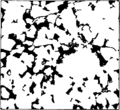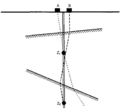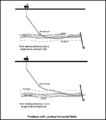Search results
Jump to navigation
Jump to search
Page title matches
- #REDIRECT [[Seismic data: two- or three-dimensional interpretation]]68 bytes (7 words) - 16:05, 21 November 2014
- 41 bytes (5 words) - 20:18, 30 January 2014
- ...lts, channels, and other features of interest. There will always be faults or channels oriented at angles between 0° and 45° relative to the orientatio8 KB (1,280 words) - 17:33, 25 January 2022
- 73 bytes (11 words) - 15:00, 28 June 2013
Page text matches
- ...969. For future and current events, use phrases such as as of January 2014 or since the beginning of 2010 to signal the time-dependence of the informatio If you must give information or data which will go stale in the future, please use the {{tl|update after}}678 bytes (112 words) - 21:38, 14 January 2014
- ...[economics]] and technologies change, yesterday's dry hole may be revived (or a twin to it may be drilled) to yield today's successful well.322 bytes (52 words) - 13:44, 18 March 2019
- ...ic log, usually in units of μs/ft or μs/m. It is also seen as ''delta t'' or ''Δt''.205 bytes (40 words) - 20:03, 14 April 2014
- ...r methanogenic) biodegradation during migration or while in the reservoir, or at surface seeps, typically at temeraptures approximately less than 80°791 bytes (108 words) - 19:58, 25 June 2015
- <!--If no or empty "demospace" parameter then detect namespace--> | <!--No "demospace" or "page" parameters, so detect actual namespace-->1 KB (119 words) - 12:59, 6 August 2013
- When making an edit or creating a new page on '''{{SITENAME}}''', contributors agree to these uses ...loads, for the purposes of tracking usage volume, diagnosing access issues or problems with the wiki server, and to administer the website.2 KB (333 words) - 15:37, 9 October 2013
- ...y and permeability. For instance, burrows filled with sand grains in a mud or clay unit could be conduits for fluid flow if connected. Bioturbation can o907 bytes (132 words) - 21:42, 18 September 2014
- ...ot contain oil or gas. Accumulations, or pools, are traps that contain oil or gas.<ref name=Vincelette>Vincelette, R. R., E. A. Beaumont, N. H. Foster, 2 ...s smaller than the carrier bed. The seal pore throat breakthrough pressure or the distance to the spill point of the trap, whichever is less, determines1 KB (206 words) - 17:37, 27 January 2015
- <!--If no or empty "page" parameter then detect | subsubpage <!--Subsubpage or lower-->757 bytes (63 words) - 21:26, 14 January 2014
- ...lly written as N25E, to distinguish it from dip, which is written 4S, 4SE, or 4 65SE.585 bytes (88 words) - 16:06, 11 September 2014
- ==Pages with missing or problematic figures==644 bytes (80 words) - 21:22, 1 June 2015
- ;Privacy policy: What one may or may not do with a user's data or behaviour. ;Copyrights: or '''Licensing''' — how people can use the content.3 KB (373 words) - 16:41, 31 July 2013
- ...hores), differences between two seismic events or reflections (isochrons), or any variables that can be mapped.540 bytes (69 words) - 20:24, 27 March 2015
- #REDIRECT [[Seismic data: two- or three-dimensional interpretation]]68 bytes (7 words) - 16:05, 21 November 2014
File:M91Ch13FG80.JPG ...can be used to pick likely fault planes in wells. Changes in dip amplitude or azimuth can indicate that a fault is present. Drag patterns may also be see(800 × 660 (102 KB)) - 21:14, 29 April 2015
File:Geological-heterogeneities fig2.png ...ermeability profiles of (a) fining- or thinning-upward and (b) coarsening- or thickening-upward sequences. ''Fining'' and ''coarsening'' refer to average(940 × 630 (40 KB)) - 15:35, 14 January 2014- '''HotCat''' allows registered users to quickly add or change categories.73 bytes (10 words) - 18:22, 17 January 2014
- ...remaining oil consists of saturates, aromatics, and nitrogen, sulfur, and/or oxygen (NSO) compounds.<ref name=Petersetal_2012>Peters, Kenneth E., David886 bytes (126 words) - 16:34, 25 June 2015

File:M106Ch12Table2b.jpg ...ce strata type: basinal marine (includes calcareous and marly lithologies) or basinal shale. Volumes of oil and gas in-place, estimated ultimate recovera(700 × 474 (70 KB)) - 15:30, 12 May 2016
File:M106Ch12Table2.jpg ...ce strata type: basinal marine (includes calcareous and marly lithologies) or basinal shale. Volumes of oil and gas in-place, estimated ultimate recovera(700 × 442 (69 KB)) - 15:28, 12 May 2016
File:M106Ch12Table2a.jpg ...ce strata type: basinal marine (includes calcareous and marly lithologies) or basinal shale. Volumes of oil and gas in-place, estimated ultimate recovera(700 × 515 (83 KB)) - 15:29, 12 May 2016
File:M106Ch12Table2c.jpg ...ce strata type: basinal marine (includes calcareous and marly lithologies) or basinal shale. Volumes of oil and gas in-place, estimated ultimate recovera(700 × 489 (73 KB)) - 15:30, 12 May 2016- ...h static web content, but is more akin to the AAPG's nascent blog channel, or its membership engagement functions. ...ted, content-oriented, and technical. They don't have to be a geoscientist or even a petroleum professional, but it would help.2 KB (294 words) - 16:44, 22 July 2013
- ...write it more simply and concisely by using the {{tlc|tlc}}, {{tlc|tld}}, or {{tlc|tlf}} templates. ...name use {{tlx|tl}} or {{tlx|tlx}}, and then use {{tlc|tlc}}, {{tlc|tld}} or {{tlc|tlf}} thereafter.726 bytes (127 words) - 17:38, 4 November 2013
- ...write it more simply and concisely by using the {{tlc|tlc}}, {{tlc|tld}}, or {{tlc|tlf}} templates. ...name use {{tlx|tl}} or {{tlx|tlx}}, and then use {{tlc|tlc}}, {{tlc|tld}} or {{tlc|tlf}} thereafter.726 bytes (127 words) - 17:38, 4 November 2013
- ...tion (look-ahead seismic profiles). Data can be transmitted to the surface or stored for later retrieval.2 KB (206 words) - 21:17, 3 December 2015
- ...m. It produces water only. Zero [[buoyancy pressure]] exists at this level or below.525 bytes (76 words) - 14:40, 8 September 2014
- ...e you mis-spelt it, or because it is missing from [[Template:Next period]] or [[Template:Period start]].</span>|{{Ma|{{{1|{{PAGENAME}} }}}|{{period start667 bytes (77 words) - 20:45, 4 November 2013
File:1024px-WaveRipple.JPG Wave ripple or symmetric ripple, from Permian rocks in Nomgon, Mongolia. Photo by Matt Aff(1,024 × 768 (251 KB)) - 20:29, 22 December 2014- ...ured (e.g., [[resinite]], [[sporinite]], or [[cutinite]]) and unstructured or amorphous liptinites, sometimes called [[amorphinite]], can occur.<ref name788 bytes (102 words) - 19:51, 25 June 2015
- The proposed classification scheme divides [[trap]]s into three main groups or systems, based on the controlling geologic element that created the trap: ...ure|syndepositional]] [[deformation]] or displacement of [[reservoir]] and/or [[seal]]ing units3 KB (405 words) - 17:44, 12 April 2022
- ...of the Content and shall not have any liability whatsoever for any direct or consequential damages resulting from the use of any information obtained th ...this Web site or cited, used or discussed in AAPG copyrighted publications or in presentations at events associated with AAPG.4 KB (654 words) - 18:31, 2 August 2013
- ...OR! Start of period {{{period}}} unknown, perhaps because it was mis-spelt or because it is missing from [[Template:Period start]].</span> ...ROR! End of period {{{period2}}} unknown, perhaps because it was mis-spelt or because it is missing from [[Template:Next period]].</span>653 bytes (83 words) - 20:49, 4 November 2013

File:Using-and-improving-surface-models-built-by-computer fig8.png Cross sections showing that surfaces that intersect due to (a) baselap or (b) truncation will incorrectly cross one another.(837 × 343 (9 KB)) - 22:32, 13 January 2014- ...entionally or may occur accidentally. A [[multilateral well|multilateral]] or [[multilevel well]] will have multiple intentional sidetracks drilled to pr1 KB (191 words) - 19:41, 3 March 2016
- This term refers to a vertical measure of the reservoir or trap containing hydrocarbons.165 bytes (22 words) - 19:51, 14 April 2014

File:ST53 Part01 Pg11A.jpg ...thin toward the structural high. Growth strata are generally folded in one or more limbs of the structure. In this seismic section, growth strata thin on(750 × 509 (230 KB)) - 16:23, 28 July 2015- ...ows definitions and examples for the classes and subclasses of these traps or trapping elements. ...ne or more sides by normal faults. Rotation traps hydrocarbons along edges or in corners.5 KB (740 words) - 16:04, 13 April 2022

File:Reservoir-quality fig1.png ...raphic image of sandstone. Dark areas are pores and light areas are grains or cement.(950 × 868 (20 KB)) - 18:46, 14 January 2014- ...pture of details in sedimentary features for analysis away from the field, or for use in teaching.2 KB (239 words) - 19:40, 9 September 2014

File:Checkshots-and-vertical-seismic-profiles fig3.png The source position (A or B) should be chosen so that the travel path to each receiver is as nearly v(945 × 875 (8 KB)) - 21:28, 13 January 2014- ...deasphalting is achieved by adding light hydrocarbons, such as [[pentane]] or [[hexane]], to the oil. A similar process can occur in nature when [[methan864 bytes (120 words) - 19:55, 25 June 2015
- ==User types or roles== | '''Root''' || 3 || Login || No || All || The person or people who can log into the server and edit LocalSettings.php2 KB (294 words) - 16:01, 6 August 2013
- ...ned [[sandston]]e might be classified as having intergranular mesoporosity or a [[limestone]] as having vuggy macroporosity. |Mega/macro || Clean, coarse sandstone or [[carbonate]] [[grainstone]] ||3 KB (442 words) - 13:52, 4 April 2022
- [[Diagenesis|Diagenetic]] traps occur in two basic categories: early or near-surface traps and late-burial traps. Early or near-surface diagenetic traps are created by the following:2 KB (294 words) - 21:01, 4 February 2022
- {{{ {{#if:{{{page|}}}| {{{page|}}} | {{FULLPAGENAME}} }} <!--Has data, or is empty but defined--> | <!--Else, are we on a subpage or a basepage?-->2 KB (203 words) - 18:59, 17 January 2014
- <!--"heading" not defined in this or previous level--> <!--"heading" has data or is empty but defined-->2 KB (205 words) - 13:38, 1 July 2014
File:M91Figure162.JPG ...encountered with landing a horizontal well if the target zone is too high or too low compared to what is predicted. From Chapter 28, AAPG Memoir 91, by(600 × 682 (38 KB)) - 19:32, 30 July 2014- A break or discontinuity in a process. An [[unconformity]] is the physical representa217 bytes (28 words) - 20:48, 25 August 2014
- Fluid-composition traps are controlled by the physical or chemical properties of the trapped fluids themselves. The [[Wikipedia:Solub ...[[asphalt]], [[tar]]) or solid hydrocarbons ([[albertite]], [[gilsonite]], or [[grahamite]]). || ''Tar Seals'' || ''Bacterial degradation;'' Updip tar se3 KB (402 words) - 16:31, 13 April 2022


